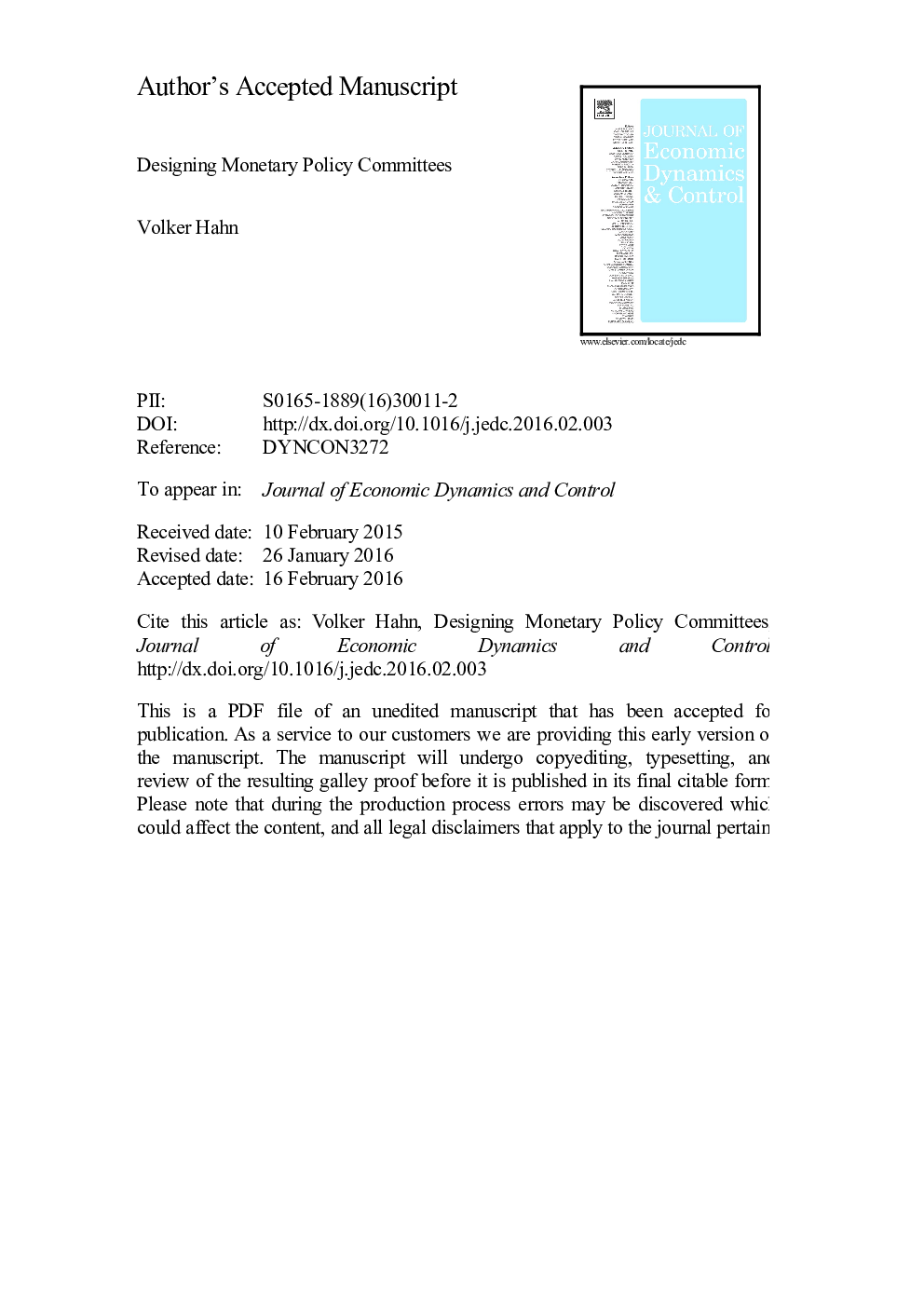| Article ID | Journal | Published Year | Pages | File Type |
|---|---|---|---|---|
| 5098188 | Journal of Economic Dynamics and Control | 2016 | 46 Pages |
Abstract
We integrate monetary policy-making by committee into a New Keynesian model to assess the consequences of the committee׳s institutional characteristics for inflation, output, and welfare. Our analysis delivers the following results. First, we demonstrate that transparency about the committee׳s future composition is typically harmful. Second, we show that short terms for central bankers lead to effective inflation stabilization at the expense of comparably high output variability. Third, larger committees generally allow for more efficient stabilization of inflation but possibly for less efficient output stabilization. Fourth, large committees and short terms are therefore socially desirable if the weight on output stabilization in the social loss function is low. Fifth, we show that a central banker with random preferences may be preferable to a central banker who shares the preferences of society.
Related Topics
Physical Sciences and Engineering
Mathematics
Control and Optimization
Authors
Volker Hahn,
